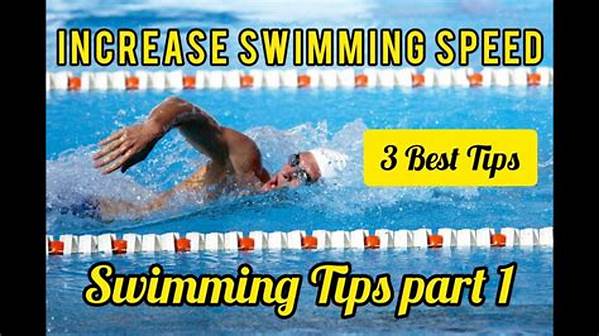How To Increase Swimming Speed

Imagine cruising through the water like a sleek dolphin, effortlessly cutting through waves, leaving fellow swimmers behind in awe. Picture the exhilarating rush as milliseconds tick down, delivering you a personal best. But this isn’t just any swim story – it could be yours. The journey to increase your swimming speed is not only a venture into physical prowess but a narrative of strategic finesse, mental fortitude, and cutting-edge techniques. Exciting, right? Dive into this definitive guide to mastering the art of swimming speed.
Read More : Sky Sports News Presents News On The 2025 International Cup Finals
In the world of competitive swimming, milliseconds matter and being fast can make you a hero. But how does one emerge from the sea of ordinary swimmers to stand tall on the podium? The secret lies not only in the strokes but in understanding the fine balance between technique, strength, and mentality. With engaging stories and practical tips, this article is your diving board into the secrets of becoming a speed machine in the pool.
Understanding the Basics of Speed
The Fundamentals of Swimming Techniques
Speed in swimming is not merely about moving your arms and legs faster; it’s a symphonic blend of precision, technique, and stamina. Techniques such as the streamline position can reduce drag and enhance propulsion, setting the foundation for achieving higher speeds. The art of “catching” the water efficiently with high elbow positions during freestyle propels you forward, creating less resistance.
The most renowned swimmers are not necessarily the strongest or the biggest, but often those who have mastered efficiency in every stroke. Research and anecdotes from legendary swimmers point to the importance of developing a personalized technique that complements one’s natural capabilities and body type. Understanding and mastering these basics can provide a measurable increase in swimming speed.
Building Strength and Power
To excel in swimming requires the build-up of core muscles and upper body strength, providing the power necessary to push against the water. Incorporating strength training exercises like planks and pull-ups can exponentially improve your swimming performance. Interestingly, studies have shown that dryland workouts contribute significantly to in-pool speed.
Diversifying your physical routine enhances flexibility, power, and prevents injury, thus paving the way for speedier swimming. Remember, strength is not just about muscle—it’s about how those muscles are used effectively to propel you through the water.
Harnessing Mental Preparation
Peak performance in swimming isn’t solely hinged on physical prowess. Mental acuity and determination play pivotal roles. Visualization techniques, where one imagines themselves moving swiftly and effortlessly in the water, can enhance performance. According to sports psychologists, instilling a positive, confident mindset can bolster results, pushing physical capabilities to new limits.
Implementing Advanced Techniques
The Role of Training Technology
Welcome to the age where technology and sports converge. Wearable technology such as smart goggles, which provide real-time feedback, has revolutionized training routines, offering insights into speed and lap times. These tech marvels allow swimmers to make instantaneous adjustments, improving techniques and rectifying flaws on the go.
Tailoring Nutrition for Speed
What you eat can substantially impact how fast you move in water. High-energy foods like complex carbohydrates, lean protein, and healthy fats fuel crucial energy systems during intense swimming sessions. Hydration also plays a non-negotiable role in maintaining peak physical condition, ensuring muscles remain supple and responsive.
Read More : How To Improve Three-point Shot Accuracy
Crafting a Winning Strategy
Creating a Personalized Swim Plan
Crafting a plan focused on incremental improvements is imperative. Structure your training sessions with clear goals—say, reducing lap time by a few seconds over weeks. Maintain a log of your progress as a motivational tool and tangible proof of your advancement.
Gaining Insights from Professional Swimmers
Learning from seasoned professionals offers invaluable insights. Numerous testimonials from top-tier swimmers emphasize that commitment to consistent practice, coupled with learning from every race or training session, fuels improvements in speed.
Details on How to Increase Swimming Speed
To ace in the pool, swimmers need more than passion—they need strategy and precision. Let’s delve deeper into specific strategies designed to ramp up your swimming speed effectively:
Points on How to Increase Swimming Speed
Summary: How to Increase Swimming Speed
Swimming speed is the result of integrated efforts across various dimensions of technique, strength, and mental preparedness. By committing to improving in each of these areas, measurable improvements can be achieved. The journey may initially seem daunting, but with dedication and strategic planning, the path to faster swimming becomes navigable.
In your endeavor to swim faster, embrace it as an opportunity to not only improve your speed but to enhance your physical fitness, mental resilience, and appreciation for strategy within the sport. As you hone your skills, remember that each stroke and every practice session builds toward your ultimate goal: excelling in the aquatic realm.



